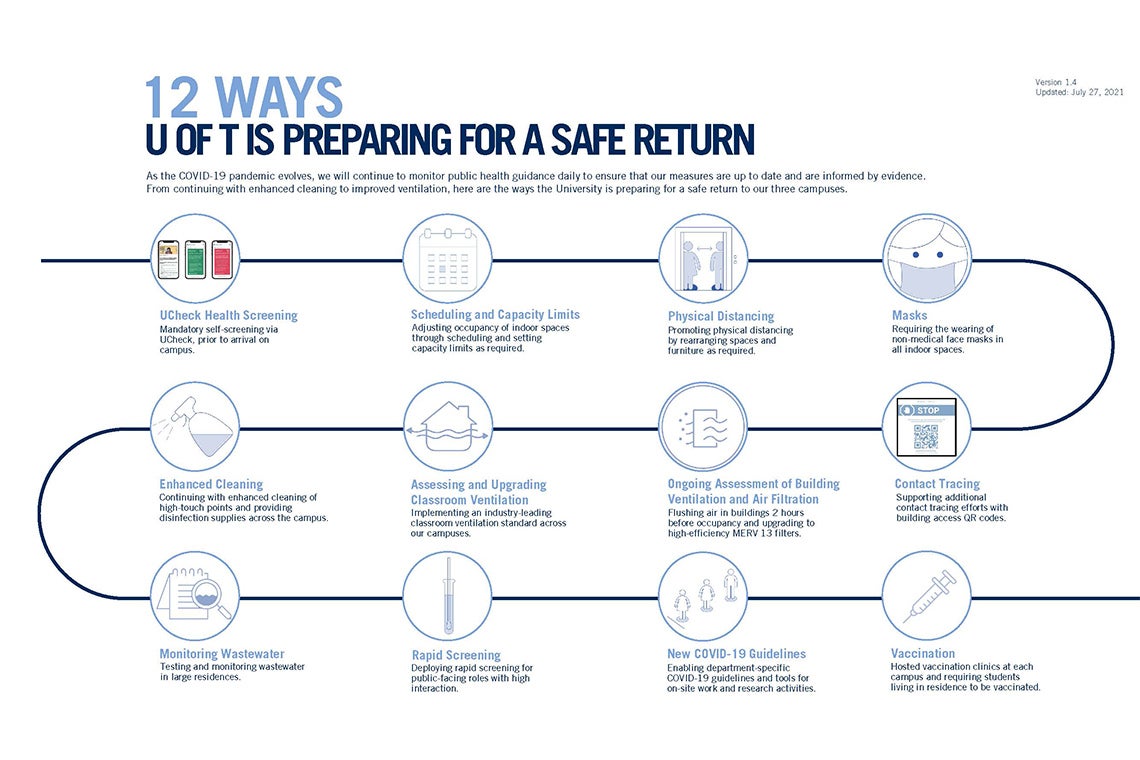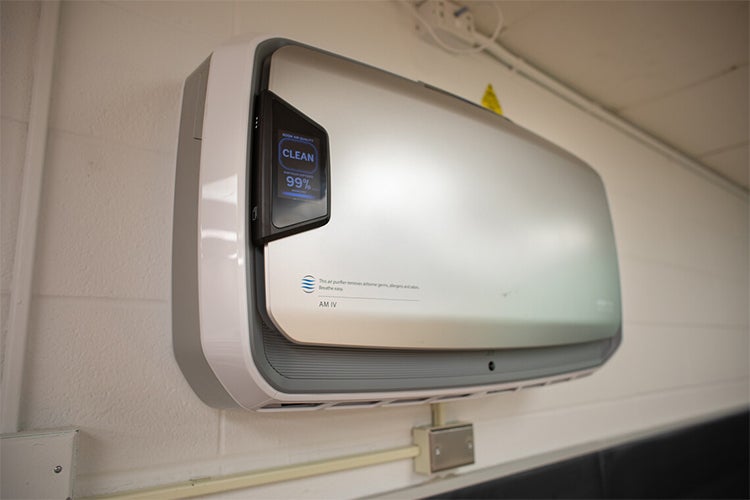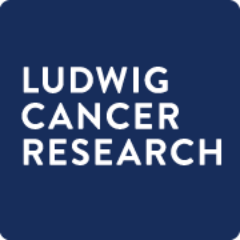
The University of Toronto is closely monitoring the latest public health guidance as it prepares to welcome students, faculty, staff and librarians back to campus this fall.
Ontario’s Ministry of Colleges and Universities recently sent a memo to post-secondary institutions expressing its support for a safe return to in-person learning in alignment with the latest evidence. Further guidance is expected from the province in early August, which U of T will follow in conjunction from guidance from local public health authorities.
“U of T is encouraged by the uptake of vaccinations in Ontario and welcomes the provincial government’s support for efforts to plan a safe return to campus this fall,” said Professor Salvatore Spadafora, a special adviser to U of T’s president on COVID-19 and senior adviser to the dean of the Temerty Faculty of Medicine.
“We are looking forward to resuming in-person learning, campus activities and other experiences in keeping with the latest public health guidance.”
At U of T, planning is already well underway for a safe resumption of in-person classes, with faculties and divisions tailoring their individual plans to meet their unique needs. Residences, meanwhile, are requiring students to be vaccinated in an effort to provide a safe, welcoming and enjoyable experience that is conducive to learning and community-building.
Several other precautions have been taken across the three campuses to curb the risk of COVID-19 transmission. Building ventilation systems are being inspected, air filters have been upgraded where necessary and air purifiers are being added to classrooms as needed. Everyone coming to campus will be required to complete a self-reported health screening and wear face masks indoors.
U of T also continues to work with local public health units to promote vaccine information and has hosted vaccination clinics on its three campuses.
Here are 12 ways U of T is planning for a safe return of in-person instruction this fall:
1. UCheck health screening
Before visiting campus, everyone – students, faculty, staff, librarians, researchers and even contractors – must complete a health screening. The easiest way to do this is by using the university’s online self-assessment tool, UCheck. A paper-based process is also available.
The UCheck questionnaire has been updated to reflect the latest public health guidance, takes just a few minutes to complete and can be accessed via smartphone, tablet or desktop. Submitted data is encrypted in transit and storage to protect users’ privacy.
2. Physical distancing measures
Ron Saporta, chief operating officer, property services and sustainability, said U of T is preparing for a variety of scenarios, including the possibility physical distancing may no longer be required indoors this fall – so long as masks are worn.
“We will be able to adapt quickly using an evidence-informed approach that adheres to evolving guidelines and, most importantly, seeks to keep our community safe,” he said.
In the meantime, the university has taken steps to re-orient traffic flow in buildings by posting signage and rearranging furniture and other features to help people maintain a distance from one another if required.
3. Scheduling changes and capacity limits
Across the university, faculties and divisions are working on plans tailored to meet their individual needs.
“Everyone is committed to providing the rich academic and campus experience for which U of T is known – and it’s unlikely there will be a one-size-fits-all approach,” Saporta said.
“We are reviewing our strategy on a regular basis and will be taking into account any changes to public health guidelines.”
With capacity restrictions being relaxed across the province, U of T anticipates that such limits will be lifted for educational spaces by this fall and will continue to monitor public health directions – making updates to its plans when appropriate.
4. Non-medical face masks
The university’s policy requiring non-medical masks to be worn in all indoor spaces will remain in effect in accordance with evolving public health guidelines. U of T’s mask policy and allowable exclusions, as well as answers to frequently asked questions about masks, can all be found on the UTogether site and Chapter 6 of the General Workplace Guideline (GWG).
Health Canada and Toronto Public Health now recommend wearing a well-fitted mask with at least two layers of tightly woven fabric, such as cotton, plus a third middle layer of filter-type fabric, such as non-woven polypropylene.
5. Enhanced cleaning and more sanitizing stations
The university has installed thousands of touchless hand sanitizing stations and sanitizing wipe dispensers across the three campuses. U of T has also ramped up cleaning of common-use areas such as classrooms, libraries, washrooms and lobbies.
Staff frequently wipe down and disinfect high-touch surfaces like door handles, handrails and elevator buttons.
6. Industry-leading classroom ventilation targets

(Photo by Johnny Guatto)
Classrooms that will be used for in-person teaching across the three campuses will be equipped for six equivalent air changes per hour, the same standard applied to patient examination rooms, walk-in clinics and other health-care settings.
U of T consulted outside experts in adopting its ventilation standard.
“In the context of the pandemic, we’ve been on top of recommended COVID-19 ventilation safety measures,” said Jelena Vulovic-Basic, a senior manager, operations and maintenance at U of T Facilities & Services.
7. Upgrading building ventilation and air filtration
The university continues to upgrade and monitor heating, ventilation and air conditioning (HVAC) equipment where necessary as part of its HVAC strategy. That includes monitoring and maintaining upgraded air filters that capture a greater percentage of smaller particles and outfitting some classrooms with a local air filtration device with high-efficiency particulate air (HEPA) filters.
All building ventilation systems at U of T will continue to undergo regular maintenance to ensure air is clean and flowing into and out of buildings properly.
As an additional measure, the university plans to flush air from enclosed spaces prior to occupancy.
“We turn on the ventilation system two hours before anyone walks through the door, filling the building with clean air,” Saporta said.
8. Contact tracing through QR codes
As part of a voluntary pilot project, people entering some buildings will see posters encouraging them to use UCheck to scan a QR code located at the entrances. The scans will help with contact tracing in the event of a confirmed case of COVID-19.
“If we have an issue, Occupational Health Services can notify people directly about a potential exposure,” said Cathy Eberts, U of T’s director, enterprise applications and deputy chief information officer.
“It’s all through UCheck, so your information is encrypted and only accessible by our occupational health nurse if we need to do contract tracing.“
9. Monitoring wastewater in large residences
A pilot project is underway at U of T to monitor sewage for the virus that causes COVID-19.
Some municipalities, including Ottawa, have been using this method to detect the virus – often before those who are infected realize they are sick.
At U of T, the plan is to monitor wastewater from residences that house about 100 people or more – and could be expanded in the future.
“The approach here – which was successfully tested during a pilot earlier this year – is we monitor building wastewater for pre-symptomatic or asymptomatic cases of COVID-19, and if we find it then we implement our outbreak prevention protocol,” Saporta said.
10. Rapid screening for some essential roles
The university is also piloting rapid antigen testing for U of T staff whose role requires frequent face-to-face interaction with the public, such as those working in dentistry and health and wellness.
The screening program was developed by the Creative Destruction Lab – a business accelerator affiliated with the Rotman School of Management – and has been used by the likes of Air Canada and Scotiabank.
The BD Veritor System uses nasal swabs to detect SARS-CoV-2.
The test, which returns a result in as little as 15 minutes, can accurately identify the presence of the coronavirus roughly 85 per cent of the time and can accurately eliminate those who are not infected nearly 100 per cent of the time. Those who test positive will be referred for further testing.
The pilot will expand to include more U of T community members in the fall. Rapid testing will also be used in connection with the wastewater monitoring initiative.
11. Department-specific COVID-19 guidelines and tools
Rather than taking a one-size-fits-all approach, U of T is asking each department to adapt the university’s – and indeed broader public health guidelines – to its own specific circumstances.
“It’s important to contextualize general guidelines to the space where you work,” said Gina Trubiani, U of T’s director, occupational health and safety.
“This allows for a nimbler, more flexible response so departments can apply the general guidelines based on their circumstances.”








